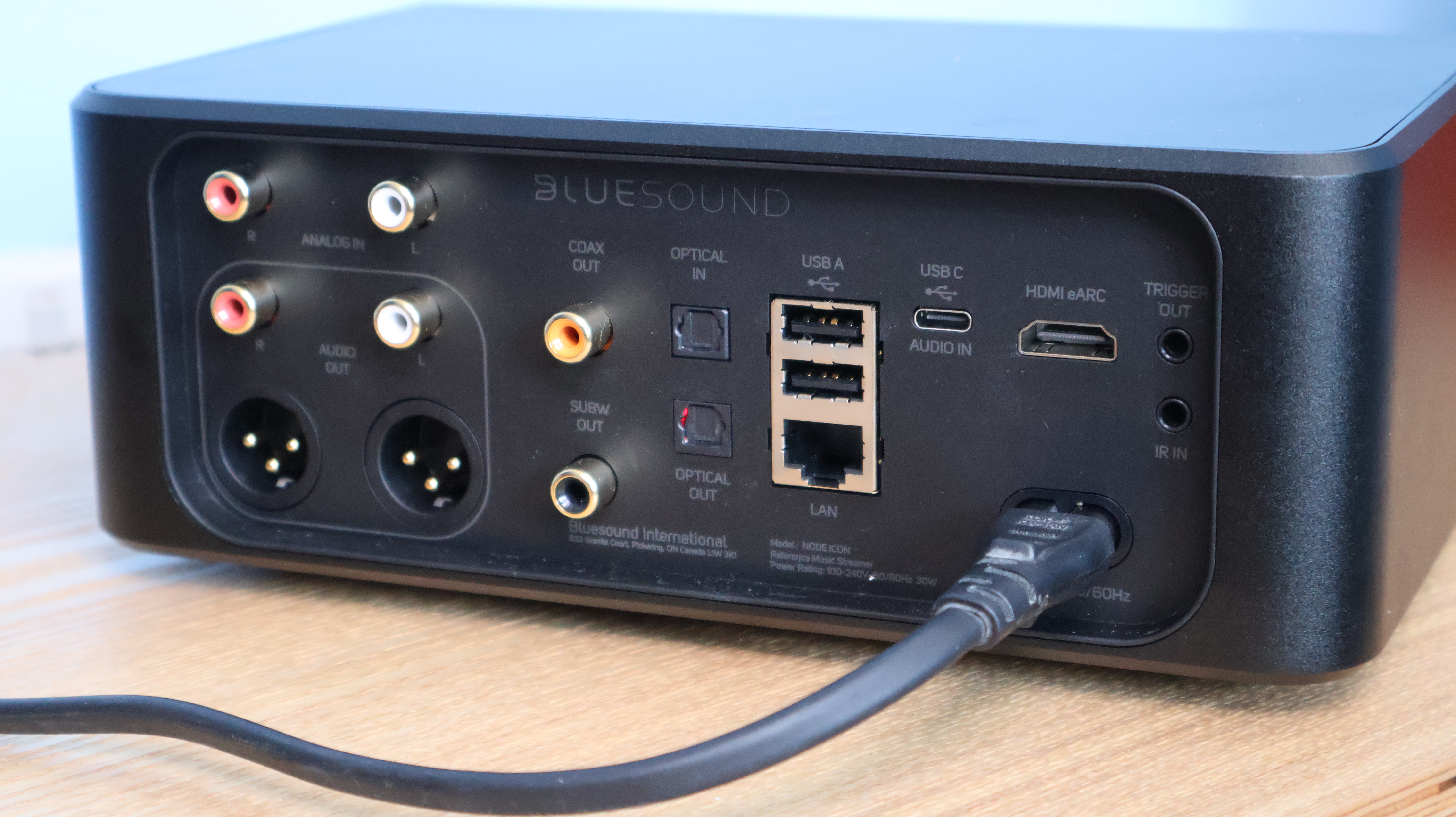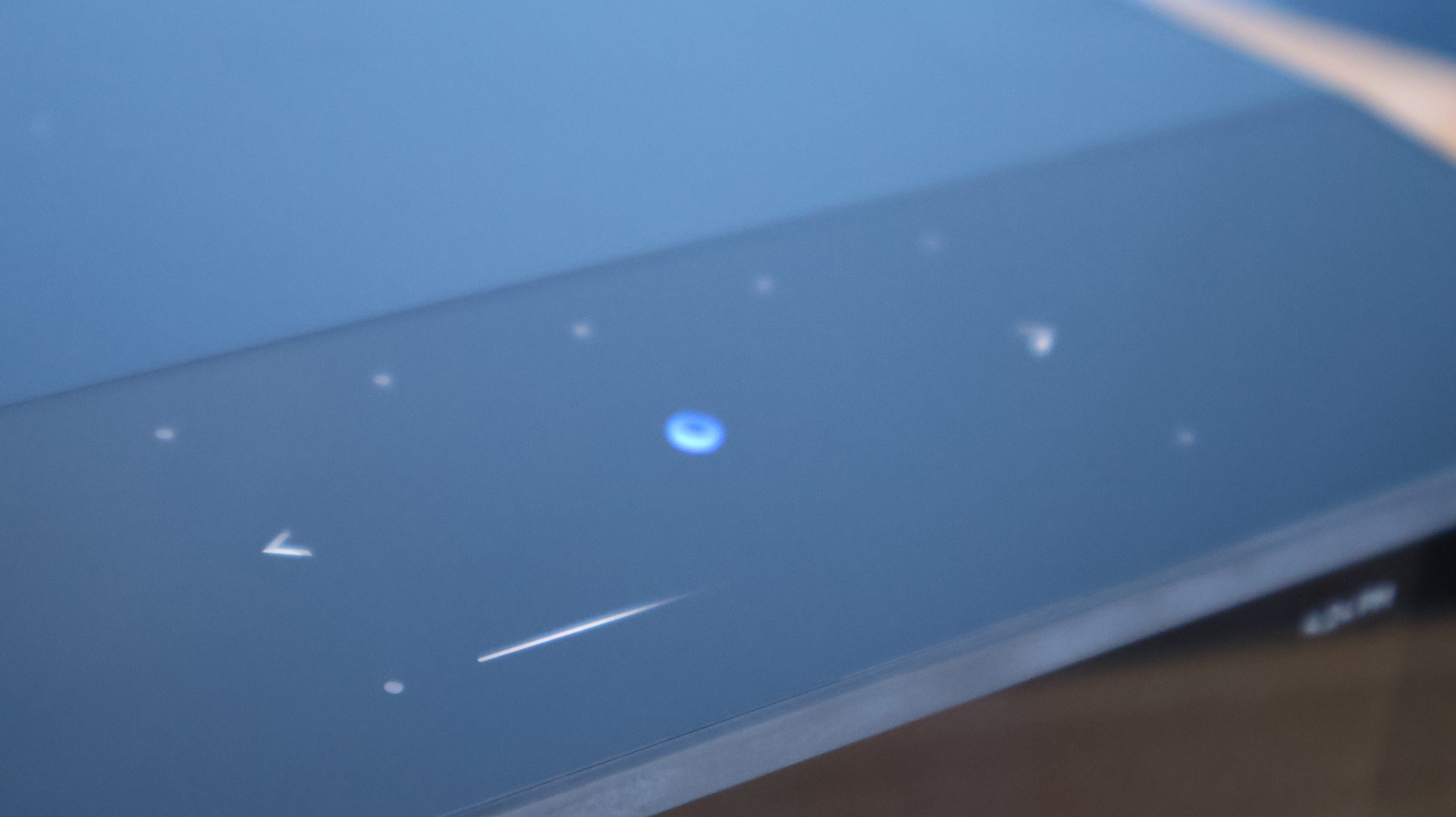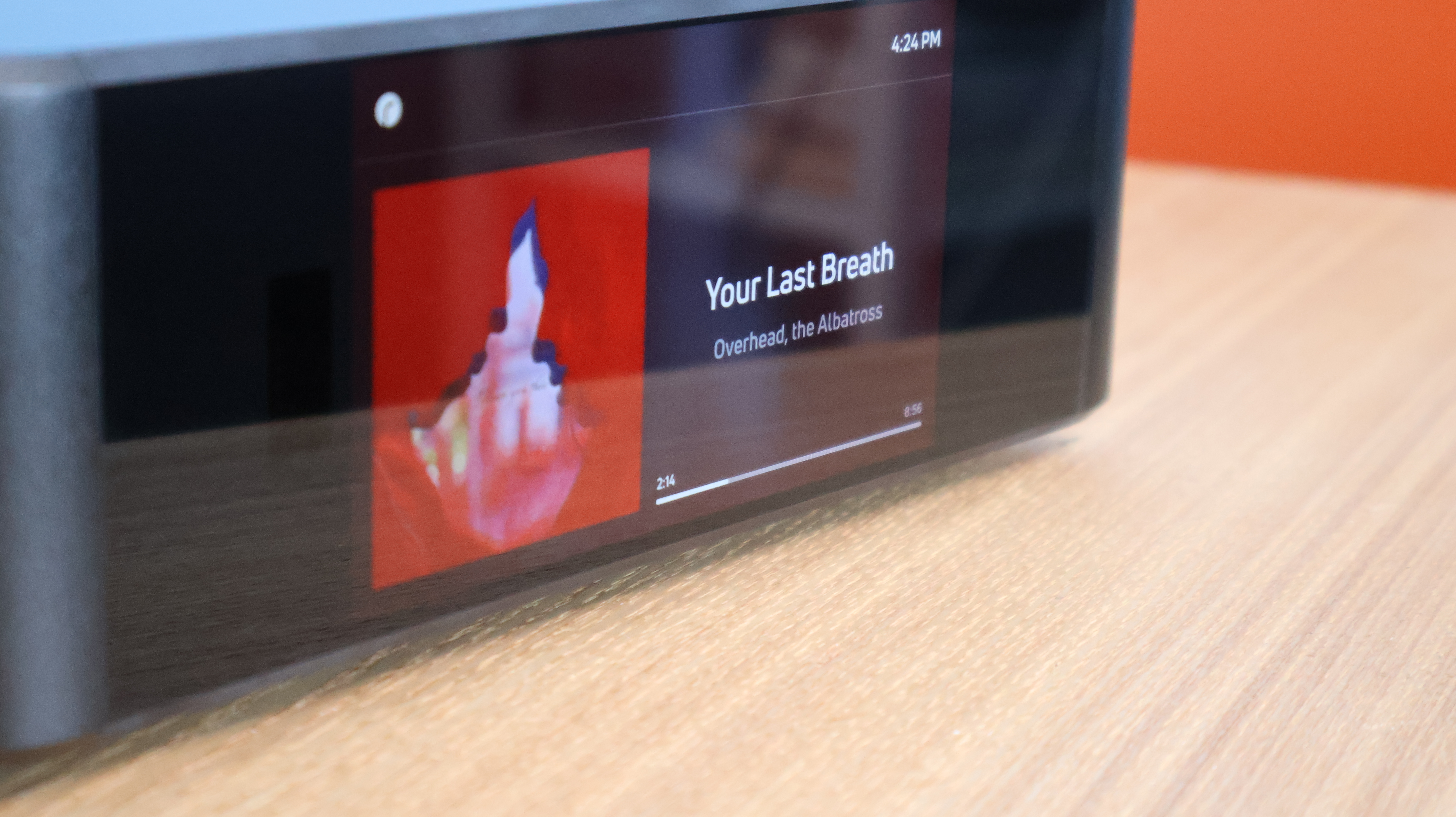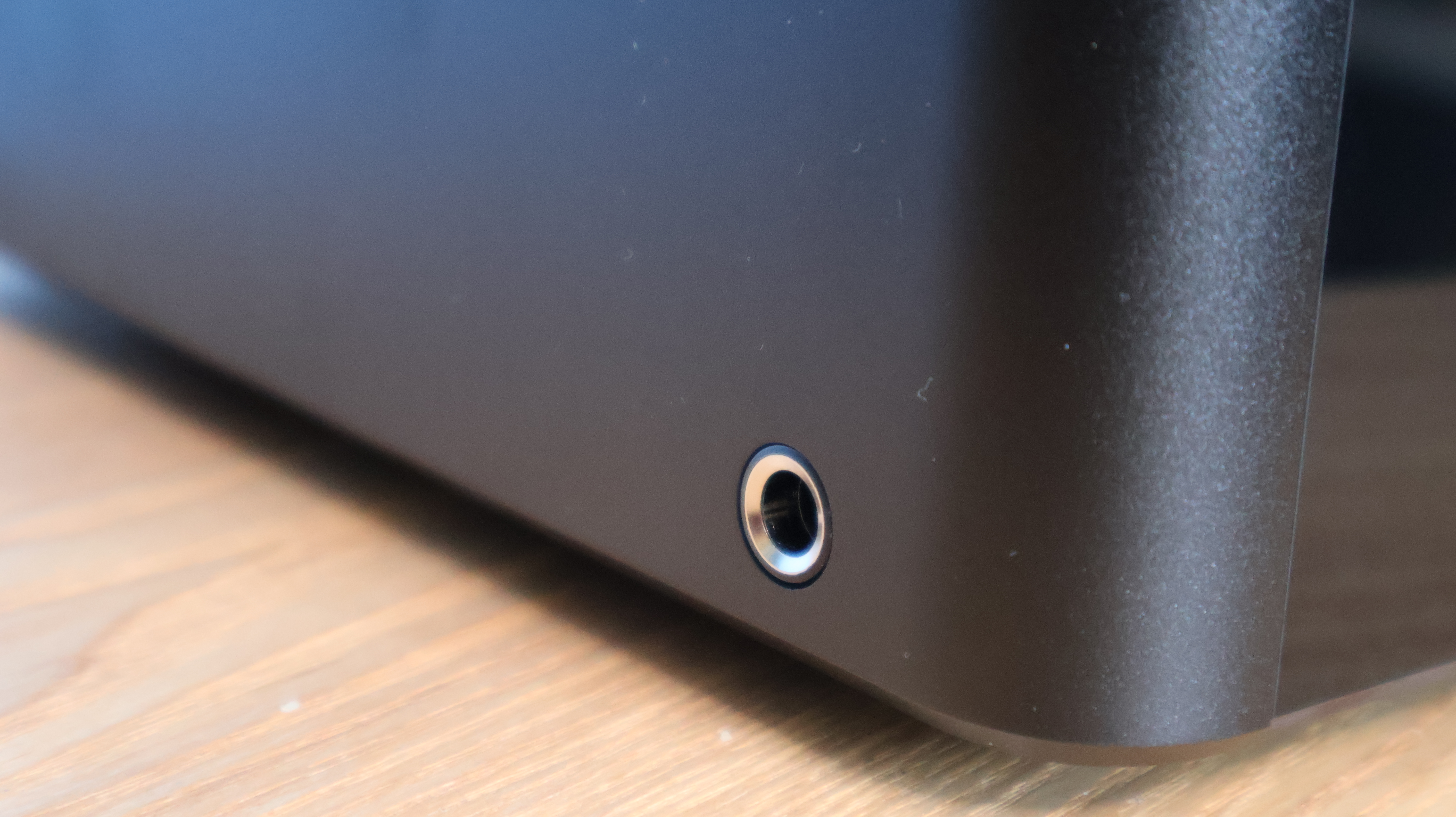Why I keep my streaming separate from my amplifier — and the device which makes it possible

There are plenty of ways to get music from your phone to a pair of speakers. You might use an aux cable, plugged into the RCA ports on the back. Perhaps your device has Bluetooth built-in Bluetooth connection. Maybe you've got something like the Wiim Amp Pro, with built-in streaming capabilities.
But if you're looking for a way to get the best possible sounding music to your speakers, there's only really one way. A streaming separate, like this one — the Bluesound Node Icon ($1199 @ Amazon). It's a streaming device that's filled with all kinds of dedicated circuitry and what I can only assume is some form of black magic.
Here's why it (and other devices like it) are the only way I'll play digital tracks over my HiFi system.
There are cheaper options out there, but the Node Icon is one of the best ways to stream high-quality tracks to some powered speakers or a HiFi stereo system. It's filled with high-tech audio gadgetry and has a large screen on the front to show you what you're listening to. Wide compatibility with a number of different streaming systems is the icing on a delicious cake.
Separate things out

There are two goals with a HiFi separates system. The first is to get as close to the sound of the artists intent as possible (AKA: I like this sound more than all the others). The second is to make your components do as much work as possible, each with it's own dedicated job.
That means nothing should be pulling double duty, ideally. It's why you'll find the really expensive setups have separate power amps for each speaker, then a pre-amplifier that sends the signal to them, followed by a separate device for each feature.
A CD player that plays CDs, a tape deck that plays tapes, and a turntable that plays records. You can get super granular with it, and many do.
A streaming separate is part of this ethos. It's sole job is to send a streamed audio signal to your amplifier or powered speakers, without having to do anything else. That means it can dedicate all of the power it consumes to that one job.
Get instant access to breaking news, the hottest reviews, great deals and helpful tips.
Dedicated

So what's in the Bluesound Node Icon? Beyond power circuits, there are buckets of excellent audio gear inside to make sure your streamed tracks sound as good as possible. That means a top-quality DAC to send an analogue signal to your amp, a WiFi connection to receive the music, and loads of extras to make sure it's doing the best job possible.
Could you pack all those bits and bobs inside an amplifier or even a pair of speakers? Yes, you could — but then you'd be compromising based on space and power. If you want a similar streaming section in an amp, you'll find it in the NAD M10 V3 — but then you've got the space and power restrictions.
So we've established why you might want one and how it all works. But why did I choose this option?
Aesthetic considerations

While the sound quality is priority number one for a HiFi system, it still needs to look cool. I like a mish-mash of devices from different manufacturers, although they all need to look cool in their own right. That's why there's a large, metal smothered amplifier at the core, an aluminum finish turntable, and now this — an enscreened streaming device.
That screen makes the whole thing feel thoroughly modern. It's 5-inches across, so it's smaller than a smart phone, but you can still see the readout from across the room.
Bright lights have a tendency to wash it out slightly, but it's still a nice option. The glowing touch controls look nice, but my goodness do I still wish they where physical — glass touch surfaces look awful when covered with finger prints.
But that's all superficial. There's a whole lot more to the story.
More detail

I want my speakers and amplifier to dictate the sound of my music for the most part, so the streaming device needs to give them a solid sonic base to work with. If you're not going to spend a thousand dollars to get that sonic base then the likes of the Wiim Ultra are excellent ways to get extremely close — but ultimately, the more proficient Node Icon has won it out for me.
It allows my speakers and amp to extract more detail from the hi-res tracks from Qobuz, and its DAC seems to do a slightly better job at resolving music. To most the difference is going to be negligible, but pair it with capable gear and the differences become more noticeable.
Then there's the ease of use. It connects to the BluOS whole home streaming solution, which lets you control the device alongside other Bluesound and BluOS devices. It's good — it connects to your best streaming services of choice, and plays music in different controllable zones.
Personally, I use Roon. The Node Icon is Roon ready, which means I just need to add it to my system and I can control it alongside the rest of my WiFi connected audio system. All of the track data appears on the device, and I've had few problems making everything work as a cohesive whole.
It's not for everyone

For most people, some form of the best Bluetooth speaker is going to suffice. You don't have to worry about streaming standards, amplifiers, or any other kind of extraneous nonsense that get audiophiles like me foaming at the mouth.
But for those of us that are excited by the likes of hi-res streaming, Dirac Live room correction and making a big stack of audio devices so that we can hear an iota more detail in the cymbals when listening to The Wall, then the Bluesound Node Icon is a piece of audio gold.
It's certainly found a home in my listening setup. If you're interested in adding streaming to your HiFi but you don't want to spend buckets and buckets of cash, then you should also check out any of Wiim's streaming devices or Bluesounds cheaper options.
Even those will sound better than something built in.
More from Tom's Guide
- I set up an incredible Dolby Atmos soundbar experience in my living room — unfortunately, it's really annoying to live with
- Nintendo Switch 2 restocks — live updates and retailers to check now
- Samsung Galaxy Watch 8 — these 5 rumored upgrades could be game-changing

Tammy and her generous collection of headphones have found a new home — Tom's Guide! After a two-and-a-half-year stint as iMore's resident audiophile, Tammy's reviews and buying guide expertise have more focus than ever on Tom's Guide, helping buyers find the audio gear that works best for them. Tammy has worked with some of the most desirable audio brands on the planet in her time writing about headphones, speakers, and more, bringing a consumer focussed approach to critique and buying advice. Away from her desk, you'll probably find her in the countryside writing (extremely bad) poetry, or putting her screenwriting Masters to good use creating screenplays that'll never see the light of day.
You must confirm your public display name before commenting
Please logout and then login again, you will then be prompted to enter your display name.

